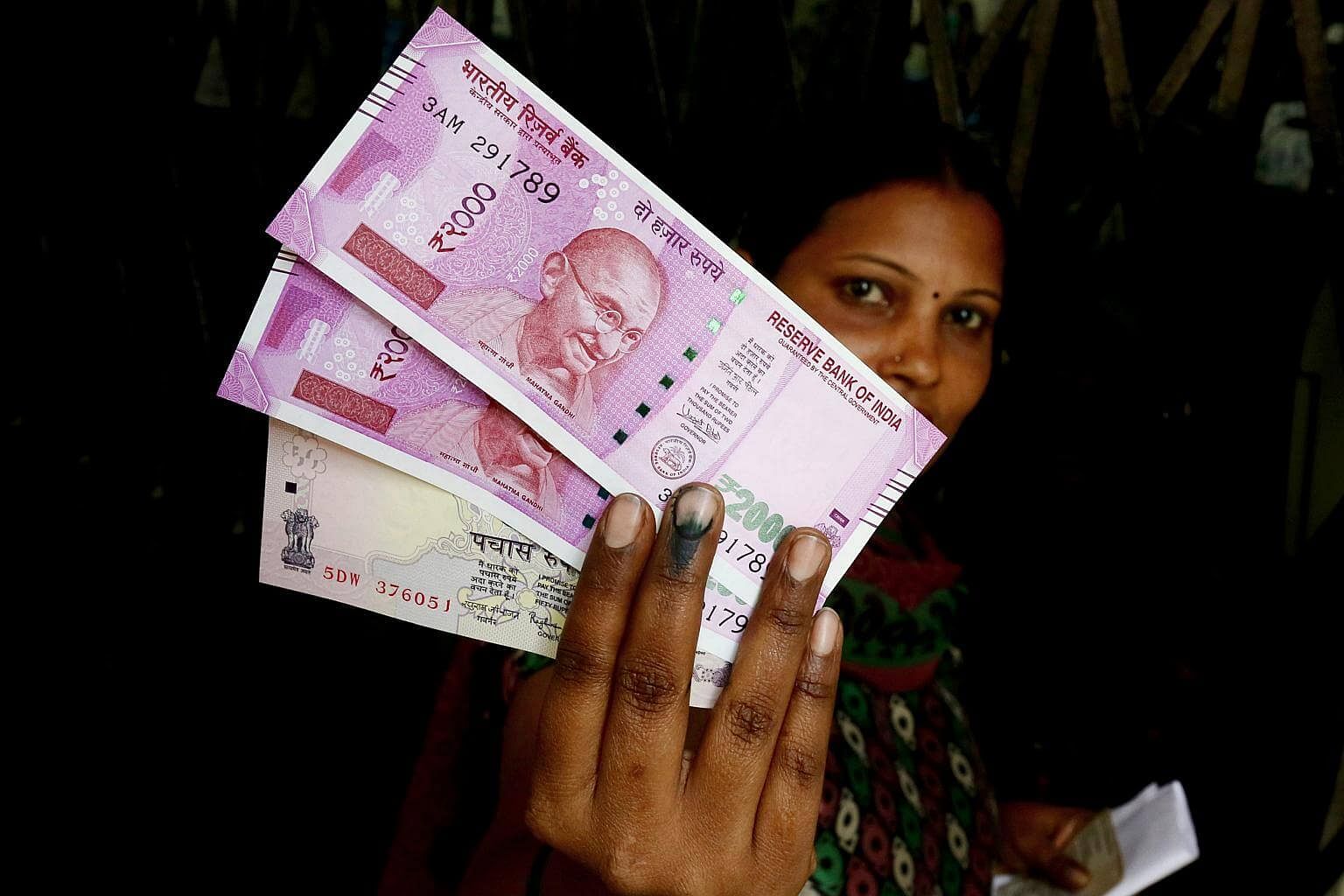It was a drastic move against a drastic problem.
On Nov 8, Prime Minister Narendra Modi announced that 500-rupee (S$10.45) and 1,000-rupee banknotes would be withdrawn from circulation at midnight, as part of a crackdown on rampant corruption and illegal cash holdings.
Two days later, new 500-rupee notes and an entirely new denomination, the 2,000-rupee note, began to be issued.
The decision by the Modi government to abruptly demonetise high-value currency aims to combat the twin menaces of a crippling shadow economy and terrorist financing that have been undermining the nation's economy and security.

India's parallel economy is estimated to be worth US$445.8 billion (S$633 billion), amounting to a fifth of the country's US$2.02 trillion gross domestic product and surpassing the economies of countries such as Thailand and Argentina.
Last week's radical step, however, sucked 22 billion of the 500-rupee and 1,000-rupee denomination banknotes - worth over 14 trillion rupees - out of the economy, forcing those within the law to rush to banks to trade in the notes for limited exchanges.
The 7.85 trillion rupees' worth of the scrapped 500-rupee notes and 6.33 trillion rupees' worth of the 1,000-rupee notes constituted an overwhelming 86 per cent of the value of Indian currency in circulation. Their combined volumes also accounted for just over 24 per cent of the overall 90.3 billion banknotes of all denominations in circulation.
The suddenness of the move caused widespread chaos, with long queues forming outside banks and ATMs which soon ran out of cash, touts offering to buy the junked notes, supplies of food and essential commodities getting delayed, stockpiles of fruit and vegetables rotting, jewellers accepting the old notes at a hefty premium, and a hit to household budgets.
Despite this turbulence, most did not begrudge Mr Modi's initiative, as they felt there was no alternative. The decision was no doubt aimed at those who had salted away ill-gotten wealth in the now delegitimised notes, rendering it virtually impossible for them to exchange their cache or even deposit it in banks without inviting scrutiny from the taxman.
A four-month Income Disclosure Scheme (IDS) that ended on Sept 30 drew just US$9.7 billion of black money from 64,275 declarants. A similar scheme last year permitting people to declare secret deposits in offshore tax havens fell far short of expectations, with fewer than 700 coming forward, and paying US$371 million in taxes. Considered among the largest depositors in banks abroad for tax evasion, Indians are estimated to have stashed away US$500 billion of corrupt money in such accounts.
India's "black economy" - economic activities outside formal banking channels - is generated significantly from bribery that is rampant in government. Much is routed through gold, real estate, the film industry, the informal sector and businesses that flourish on cash transactions.
While the incidence of black money in real estate has not been officially quantified, experts suggest that it funds about 30 per cent of the sector.
Many realtors in India are fronts for politicians or are patronised by them. The building industry, in turn, is a generous donor to political parties.
As farm income is not taxed, such bank accounts are often made a proxy for dispersing unaccounted wealth, especially by some within the country's US$122 billion jewellery industry.
India's financial capital Mumbai is home to 28 of the country's 95 billionaires and is its wealthiest city, and the 14th worldwide, with an estimated wealth of US$820 billion.
Yet, in the Palghar district just 110km to the north, 254 children have, in the past year, succumbed to malnutrition, apart from 195 foetal deaths caused by malnourished mothers.
As much as 42 per cent of Mumbai's population of 22 million live in slums, while 18.78 million families across the country - 17 per cent of urban India - live in such squalor. Over 460 million survive below the poverty line, making the country home to a third of the world's poor.
Mr Modi also specified that the demonetisation would help clamp down on the use of hawala for terror funding. Terrorist groups use hawala to send funds to their cadres across the globe, hawala being the traditional mode of money transfer - cash is handed to an agent who then has an associate in the relevant country or area paying the intended recipient.
The demonetisation is also intended to flush out fake Indian currency, much of which is reportedly counterfeited and pushed into India by Pakistan to fund cross-border terrorism and also to undermine the Indian economy. While the face value of such bogus tender is estimated at US$59.5 million, it is reckoned that US$10.4 billion worth of such notes has entered India over the years; only a third of which has been traced by law enforcers.
The Prime Minister now warns of further measures against black money, following demonetisation. In a public address, he asked his audience: "You tell me, whether money that has been stolen should be exposed or not?" There was a resounding "Yes".
- The writer is the executive editor of Business India in Mumbai.
